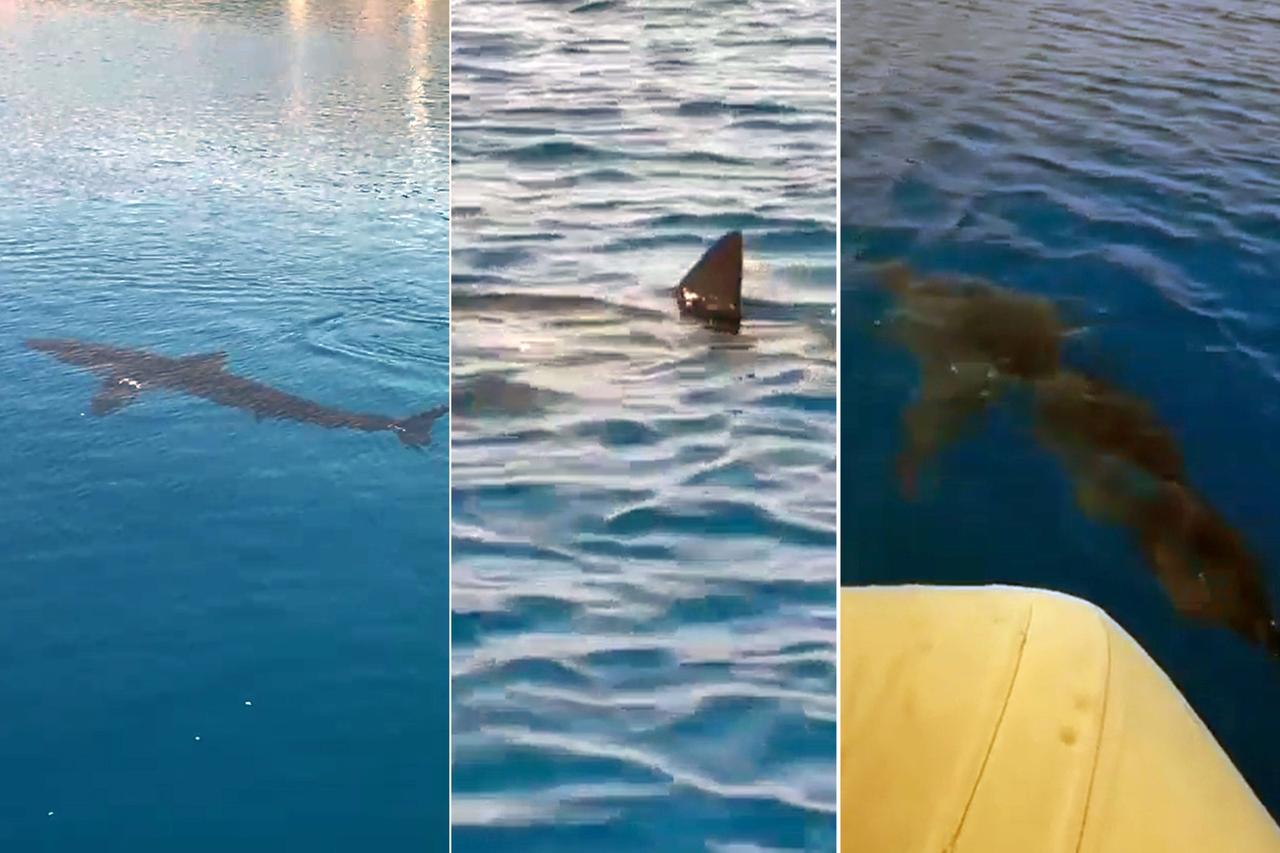
A wave of social media posts showing sharks in Türkiye’s coastal waters has gone viral, raising anxiety among beachgoers. Videos filmed off Antalya, Datca, Marmaris, and Mersin show various shark species venturing unusually close to swimmers. But contrary to public panic, experts stress this is not a new or sudden occurrence. Archival records reveal that Türkiye has witnessed rare but notable shark encounters dating back to the early 20th century.
Hakan Kabasakal, who spoke to Hurriyet, a prominent shark researcher and fisheries engineer, says the key drivers behind this increased visibility are climate change and global warming. As rising sea temperatures reduce dissolved oxygen levels, highly active ocean predators, such as sharks, are forced to migrate toward shallower coastal zones, where oxygen levels remain relatively stable.
“There’s a worrying global trend of ocean deoxygenation linked to climate change,” Kabasakal explains. “This is pushing open-sea shark species closer to coastal areas, creating population clustering and greater exposure to human activity.”
While shark attacks remain extremely rare, Türkiye’s waters are no stranger to such events. Reports from as early as the 1930s document incidents, including one where two British consulate staff members allegedly disappeared while fishing for tuna off the Marmara coast. Other fatal attacks have been reported near Tuzla in the 1960s and along Antalya’s Konyaalti Beach.
Despite these historical cases, Kabasakal warns against overreaction. He notes that only a few species found in the Aegean and Mediterranean are known to pose any threat to humans, such as the Mako shark (Isurus oxyrinchus), the Blue shark (Prionace glauca), and the Sandbar shark (Carcharhinus plumbeus). Sightings of the more infamous Great White shark (Carcharodon carcharias) are exceptionally rare, with the last confirmed presence in the Northern Aegean occurring in 2020.
Beyond climate-induced migration, human actions are intensifying interactions between sharks and people. Kabasakal highlights that discarded fish remains, waste from slaughterhouses, and increased underwater activity such as spearfishing can unintentionally trigger shark encounters. “Sharks are not deliberately targeting humans,” he says. “When you look at reported incidents, there are always environmental cues or provocations involved.”
He also draws attention to the long-term impact of coastal development and tourism. As construction alters the natural landscape and overfishing reduces prey availability, sharks are increasingly pushed into limited and stressed habitats. The current period, often referred to as the Anthropocene, marks a time when human activity dominates ecological systems, and sharks are just one example of species affected by these disruptions.
Sharks are not just occasional visitors; they depend on Türkiye’s shores for reproduction. Kabasakal points out that areas like Edremit Bay serve as irregular breeding zones for species such as the Great White, while Boncuk Cove hosts the Sandbar shark’s reproductive cycle. Even the rarely seen Angel shark, known locally as Keler, has been spotted breeding off southern Gokceada.
However, these vital areas are under threat from human encroachment. Kabasakal calls for seasonal protections: “These zones should be closed off to fishing and public use, at least during the summer months when breeding is most intense,” he says. He emphasizes that current Turkish fisheries legislation already protects around 20 shark species, and no further legal framework is immediately required—what’s needed is better environmental planning and impact assessments.
Although fears about shark attacks tend to dominate headlines, Kabasakal cautions against turning this concern into hysteria. “Sharks are not predators with humans on their menu,” he insists. Misleading and sensationalist media coverage, he argues, risks inciting harmful actions against already declining shark populations.
He adds that the real focus should be on understanding the complex environmental changes driving these encounters. “Sharks are barometers of ocean health,” he says. “If they are behaving differently, it means the sea is changing.”